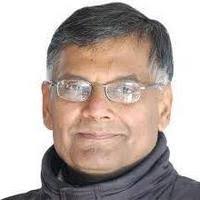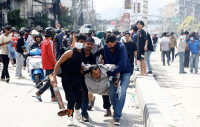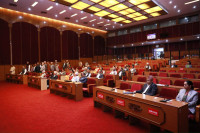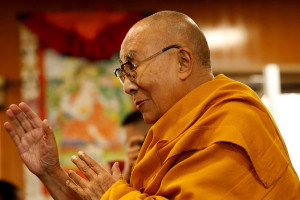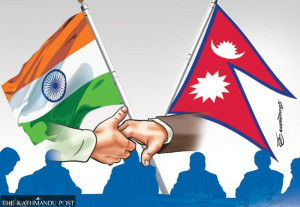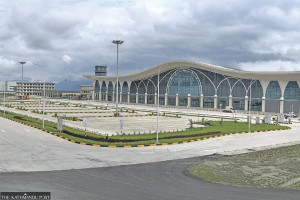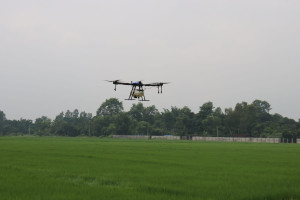Columns
The sublimation of rage in Madhesh
Madhesh needs forums for fearless and creative expressions to cope with the anxieties of externalisation.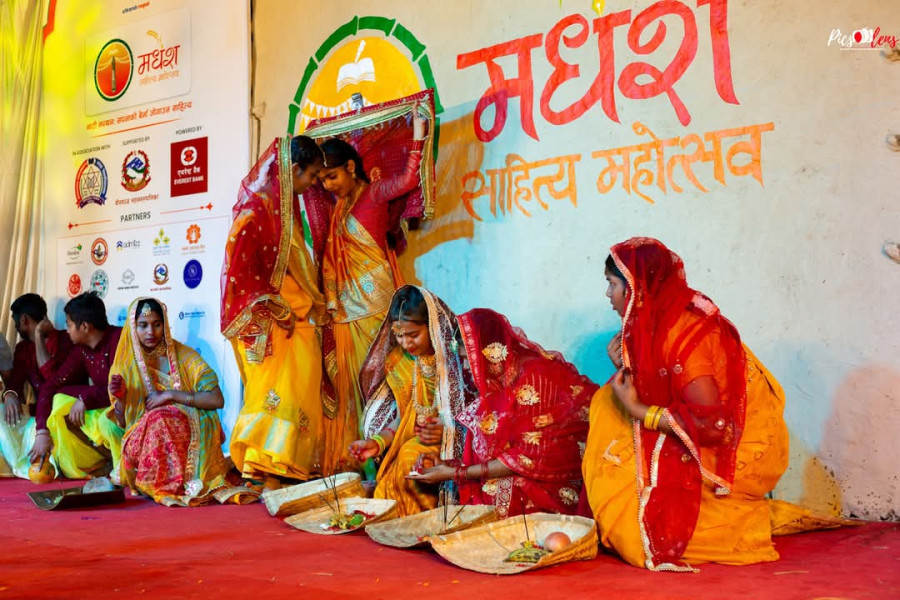
CK Lal
Birgunj appears to have partially reclaimed its traditional vitality. The quadruple whammy—the violent suppression of the Third Madhesh Uprising with at least 50 lives lost, the enforcement of a contested constitution with a curfew and the police firing, killing a protestor, the devastating impact of Covid-19 pandemic and the gradual decay in the infrastructure of the city—had debilitated the commercial hub of the country for a decade. The anger against the establishment in Kathmandu remains, but a bit of it has now been directed against the three federal ministers from the Parsa district who owe their position to the martyrs of Madhesh Uprisings.
In 2015, Ajay Kumar Chaurasia of the Nepali Congress went against the party line and stood with the protestors. It seems his voice doesn’t count for much either in the government or in his own party. Pradeep Yadav earned his political spurs during the movements for Madheshi dignity. He has recently gone to the Ashok Rai-led Janata Samajwadi Party and enjoys his informal status as the ‘Minister of Melamchi’. In the CPN (UML), the word of its Supremo Khadga Prasad Sharma Oli is law and there is little that Raj Kumar Gupta can do even for his own constituency. Last week, almost all gossipers at the popular breakfast joint near the Mahabir Temple appeared to agree that there was little that the Madheshi faces in the present dispensation could do for Madhesh.
The hustle and bustle of the main street between the Ghantaghar and the Alakhiya Math has largely returned. Even though the Damocles sword of road widening hangs over their heads, business owners religiously open their outlets with the customary lighting of agarbatti in the morning. Due to the economic slowdown, window shoppers perhaps outnumber buyers at any fancy store, but the mere presence of curious crowds at commercial establishments emanates positive vibes. Sharp shopkeepers know that every casual visitor is a prospective customer.
Freed from traffic, the front yard of the Gahawa Mai temple complex remains crowded at all times, with visitors extending and adjusting their arms for selfies. An hour of quietly watching some of the worshippers’ obsession with their cell phones offers interesting lessons about the evolving nature of self-obsession and the changing mode of self-expression. The temple is a mere backdrop where visitors pose for pictures to be shared on social media with an intrinsic message: ‘Hey buddy, look how pious I am’!
TikTokers, at least some of them from across the border where the app remains banned, are often in a hurry to shoot and post. Reel-makers for Facebook are a little less hurried and can be seen moving camera stands to capture an interesting angle. The professional camerapersons are probably shooting scenes for slightly longer YouTube videos. Even though the Ghantaghar is presented as the iconic landmark of Birgunj, it doesn’t take long for a visitor to realise that the Gahawa Mai shrine is the locus of the town.
The first Madhesh Uprising in 2007 erupted from Siraha and Saptari and forced the amendment of the interim constitution. Dhanusha and Mahottari pushed the second Madhesh Uprising in 2008 towards the first Constituent Assembly elections. The third Madhesh Uprising rose and spread from Parsa but was only partially successful in achieving its objectives before being crushed by the combined might of the security forces and the propaganda machinery of the ethnonational establishment in Kathmandu. Youngsters at the forefront of the struggle in 2015 have since matured and have made peace with the necessary but unjust peace forced upon Madhesh.
Wounded pride
Participation in political protests can be hugely empowering. A sense of purpose creates commitment to the cause one is fighting for. The possibility of bringing about social and political changes boosts energy. Confidence level rises with the intensity of collective action. A sense of being on the side of justice and the march of history keeps the participant going against all odds in the hope that the truth will ultimately prevail. But it’s not easy to face the paraphernalia of falsehood. After every conflict, the victorious redefine ‘truth’ to suit their interests and proclaim its triumph.
The rage against the establishment burnt and the dopamine of the struggle for justice gone once the final settlement has been reached, many vanquished protestors come out of the struggle exhausted, with a dispirited and wounded psyche. Withdrawal symptoms begin to manifest. The opportunists switch sides and join the winner. The pragmatists make peace with the new reality. A few get out of the scene altogether—go abroad or retreat into their social cocoon. Some continue to push the rock up the hill and endure the curse of Sisyphus.
The pain is most excruciating for idealists who are practical enough to realise their limitations but are unwilling to give up pursuing their dreams. The suffering of knowledge can sometimes be so unbearable that the biblical certainty about the truth setting one free appears illusive. Little wonder, studies have shown that the mental health of individuals who participated in protests worsened compared to non-participants. There is a reason drug abuse and religious militancy—self-harm being their common feature—often go up after many failed movements.
An ex-guerrilla of the Maoists and a former Minister Lokendra Bista Magar, has excelled as a cultivator of dragon fruits. Once a combatant of the Maoists and then the coordinator of Tharuhat-Tharuwan Rastriya Mukti Morcha, Laxman Tharu has gone into organic farming. Others with less financial and human capital at their disposal have joined the labour exodus towards West Asian countries. The flourishing NGO industry offered respectable shelter to several social entrepreneurs. Arts, sports, music and dance are some other avenues through which despondent activists sublimate their frustrations.
Creative stimulation
Artivism has a long history. Pablo Picasso (1881–1973) had once defined art as “an offensive and defensive weapon”. An artivist—a portmanteau word combining artist and activist—uses the device at her disposal to innovate, create and continue the lost fight from a different front. Artivists need cultural entrepreneurs to build public platforms where they can articulate or showcase their expressions.
The format of literary festivals has evolved over the years. Originally a forum of interaction between the writer and readers, they soon became a place where publishers pitched their assets (creators) and the product (books) to curious critics and the final consumer—the readers. It didn’t take long for the market to recognise the social acceptability and niche respectability that celebrity authors could bestow upon the sponsors of lit fests. Along with corporate events, smaller gatherings—often at the initiative of think tanks, universities or groups of sociocultural activists—offer a platform to the conformists and dissenters alike so that mutual antipathy can be transformed into greater understanding through constructive dialogue.
The Madhesh Literature Festival 2025 at the Madhesh University premises in Birgunj was one such initiative to kindle the artistic flame through the dual motifs of land and lantern. The proverb “well begun is half done” can turn out to be deceiving if the event fails to gain momentum through continuity. The centrality of politics and economy can’t be challenged, but Madhesh needs more forums for free, fearless and creative expressions to cope with the anxieties of continued externalisation.




 15.12°C Kathmandu
15.12°C Kathmandu